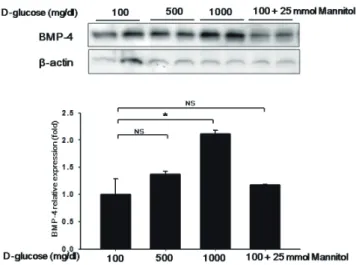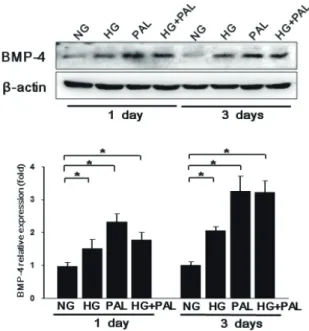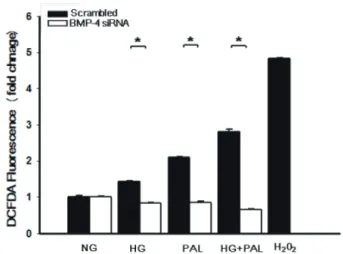www.kjpp.net 169 Korean J Physiol Pharmacol 2016;20(2):169-175 Author contributions: O.K.H. and H.S.K. participated in the design of the study. O.K.H. and H.S.K. performed the experiments. O.K.H., S.J.Y., J.W.S., M.K.K., K.H.B., K.H.S., B.Y.C., H.J. and H.S.K. conceived of the study, and participated in its design and coordination and helped to draft the manuscript. All authors read and approved the fi nal manuscript.
This is an Open Access article distributed under the terms of the Creative Commons Attribution Non-Commercial License, which permits unrestricted non-commercial use, distribution, and reproduction in any medium, provided the original work is properly cited.
Copyright © Korean J Physiol Pharmacol, pISSN 1226-4512, eISSN 2093-3827
INTRODUCTION
BMP was originally described as a bone-inducing protein. BMP members of the transforming growth factor superfamily are cytokines with diverse critical roles in embryonic development, angiogenesis, and cartilage formation [1,2]. In several tissues, BMP signaling has been linked to regulation of cellular development, pluripotency, differentiation, apoptosis, proliferation, and morphogenesis [1,3]. BMPs act as proatherogenic mediators in the arterial wall. BMP2, BMP4, and BMP6, and BMP receptors such as Alk1 are upregulated in atheroprone vascular regions and atherosclerotic lesions, indicating that they contribute to plaque
formation [3,4]. Recently, BMPs expressed under hyperglycemic and diabetic conditions have been shown to trigger the overproduction of reactive oxygen species (ROS), which in turn trigger endothelial cell dysfunction and apoptosis [4-7].
BMP4 expression is triggered by blood flow disturbances [8].
BMP4 is upregulated in atheroprone regions of blood vessels and may contribute to vascular calcification and the development of atherosclerotic plaques [8,9]. Exposure to oscillatory shear induces endothelial expression of BMP4, which in turn may activate intercellular adhesion molecule-1 (ICAM-1) expression and monocyte adhesion [8,9]. BMP4 also acts as a mechanosensitive proinflammatory cytokine that stimulates ROS synthesis by
Original Article
High glucose and palmitate increases bone morphogenic protein 4 expression in human endothelial cells
Oak-Kee Hong 1 , Soon-Jib Yoo 1,2 , Jang-Won Son 1,2 , Mee-Kyoung Kim 1,3 , Ki-Hyun Baek 1,3 , Ki-Ho Song 1,3 , Bong-Yun Cha 1,4 , Hanjoong Jo 5 , and Hyuk-Sang Kwon 1,3, *
1


